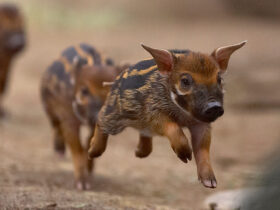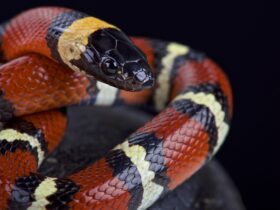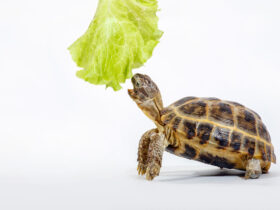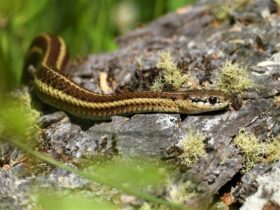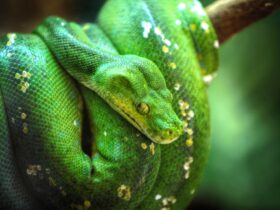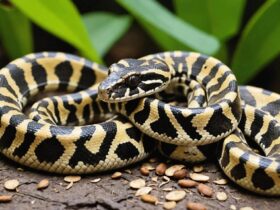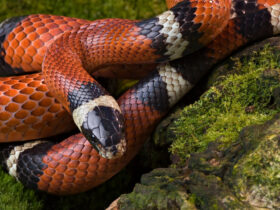Thinking about getting a corn snake? They’re pretty popular among folks new to snake-keeping. Corn snakes are known for their chill nature and are relatively easy to care for, which makes them a great choice for beginners. They don’t grow too big, and with their beautiful colors, they’re quite a sight! Plus, they don’t require a ton of space or super fancy setups. If you’re looking to start your snake journey, corn snakes might just be the perfect pet for you.
Understanding Corn Snake Behavior
Docile Nature and Temperament
Corn snakes are known for their calm and gentle nature, making them ideal pets for beginners. They generally tolerate handling well, especially when they are accustomed to it from a young age. Their even temperament means they rarely strike or bite unless they feel threatened or stressed. This makes them a popular choice among snake enthusiasts looking for a manageable and friendly reptile companion.
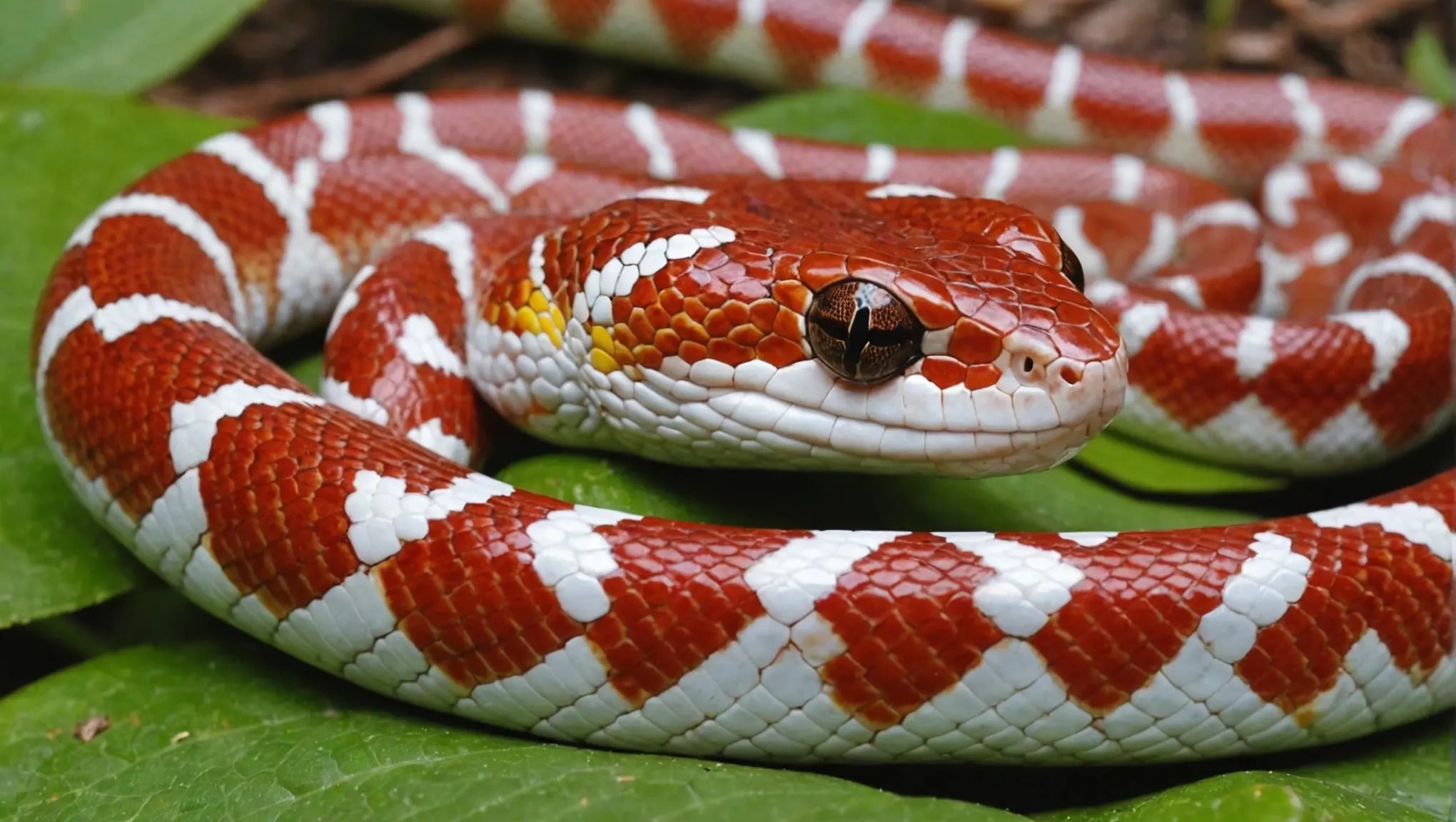
Common Misconceptions About Corn Snakes
There are several myths about corn snakes that often lead to misunderstanding. One common misconception is that they are venomous, which is not true. Corn snakes are non-venomous constrictors. Another myth is that they are aggressive, but in reality, their docile nature makes them quite the opposite. Understanding these misconceptions helps in fostering a better relationship with your pet snake.
How Corn Snakes Interact with Humans
Corn snakes are solitary animals by nature, but they can interact positively with humans if handled correctly. They recognize their owners through scent and handling, and over time, they can become quite accustomed to human interaction. It’s important to approach them calmly and confidently, as sudden movements can startle them. Patience is key when building a bond with your corn snake, and regular, gentle handling sessions can enhance this relationship.
Corn snakes are an excellent choice for those new to snake ownership. Their manageable size, ease of care, and friendly demeanor make them a rewarding pet that can thrive in a home environment with the right care and attention.
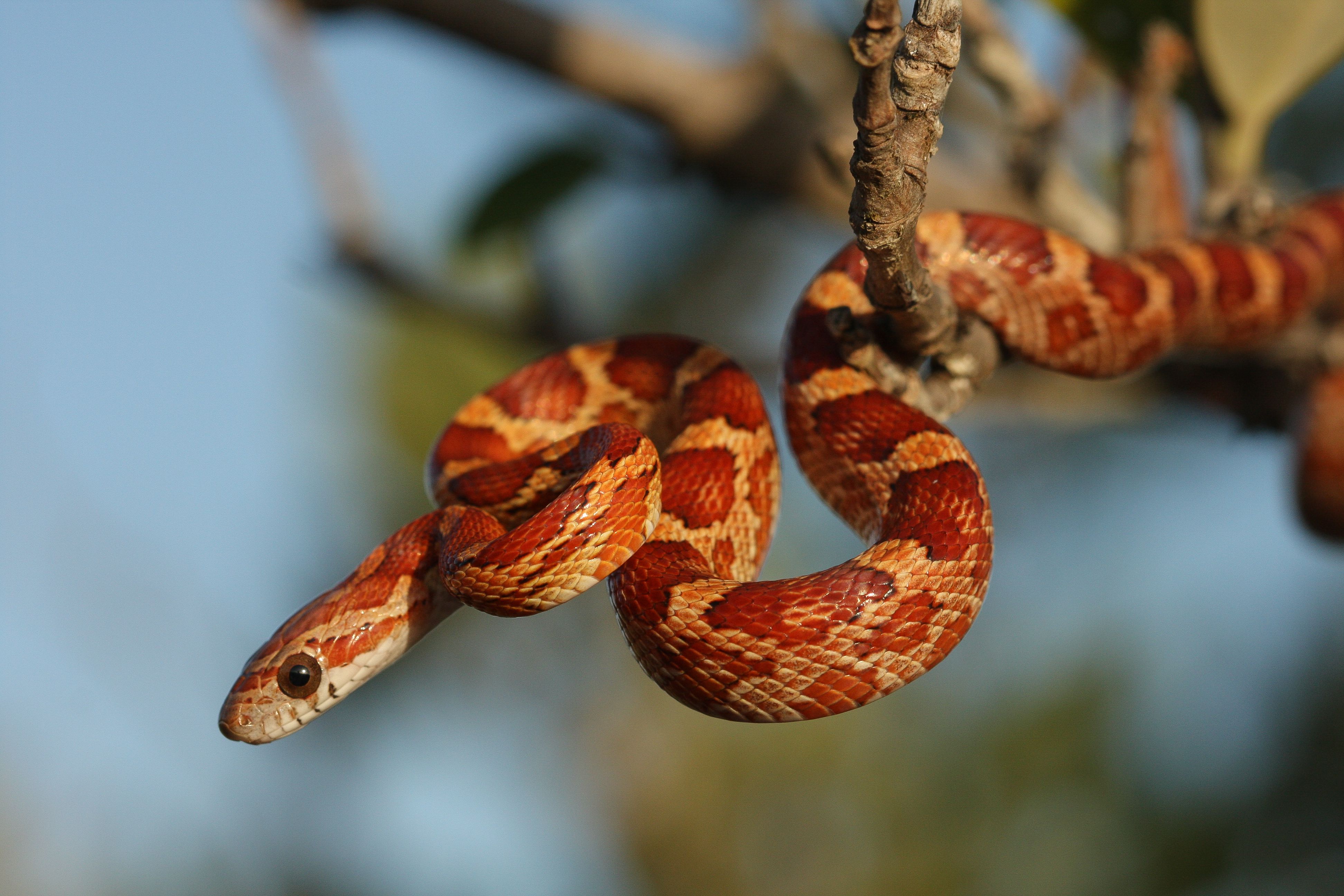
Choosing the Right Corn Snake
Identifying Healthy Corn Snakes
When you’re picking out a corn snake, there are some key things to watch for to ensure you’re getting a healthy one. Bright, alert eyes are a must, as they indicate a snake that’s aware of its surroundings. You’ll also want to see that the snake is actively flicking its tongue, checking out its environment. Look for smooth skin without any lesions or stuck shed, and make sure the snake is moving around without any signs of lethargy. Avoid snakes with visible mites or ticks. A reputable breeder will provide information about the snake’s feeding habits, shedding history, and behavior.
Popular Corn Snake Morphs
Corn snakes come in a variety of morphs, or color patterns, which can make choosing one a fun experience. Some popular morphs include:
- Albino: Known for their striking red and white coloration.
- Okeetee: Features bold red and orange patterns with black borders.
- Snow: A lighter morph with white and pale yellow colors.
Each morph has its own unique beauty, but remember that temperament and health are more important than color.
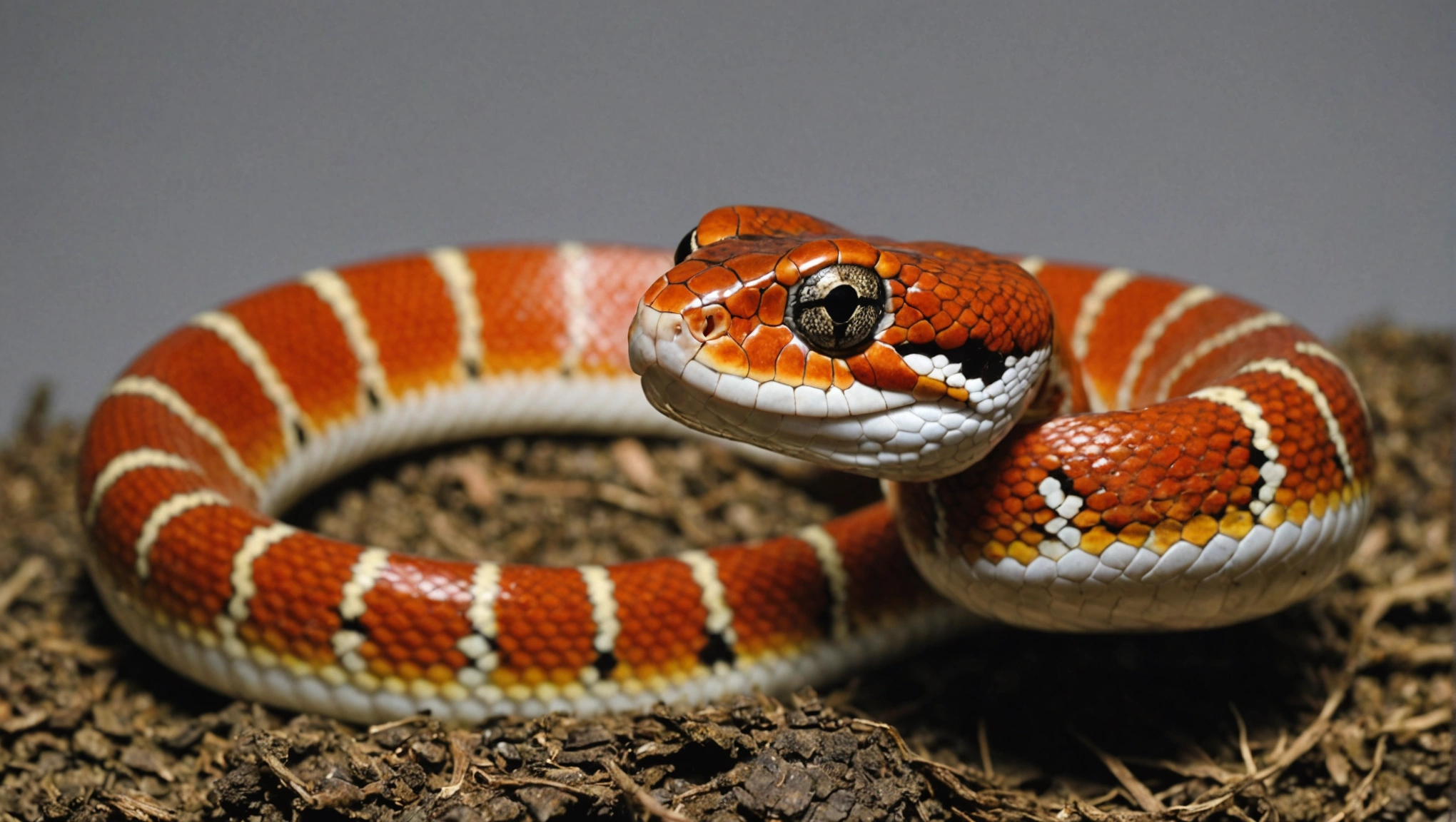
Where to Buy Corn Snakes
Finding the right place to buy your corn snake is just as important as choosing the snake itself. Consider these options:
- Reputable Breeders: They often have a variety of morphs and can provide detailed information about the snake’s background.
- Pet Stores: While convenient, ensure they have knowledgeable staff and healthy snakes.
- Reptile Shows: These events can be great for seeing a wide range of snakes and talking directly with breeders.
Before purchasing, always research the seller to ensure they are reputable and provide healthy, well-cared-for snakes.
Choosing your first corn snake is an exciting step into the world of reptile keeping. Take your time to find a healthy, well-tempered snake from a reliable source, and you’ll be set for a rewarding experience.
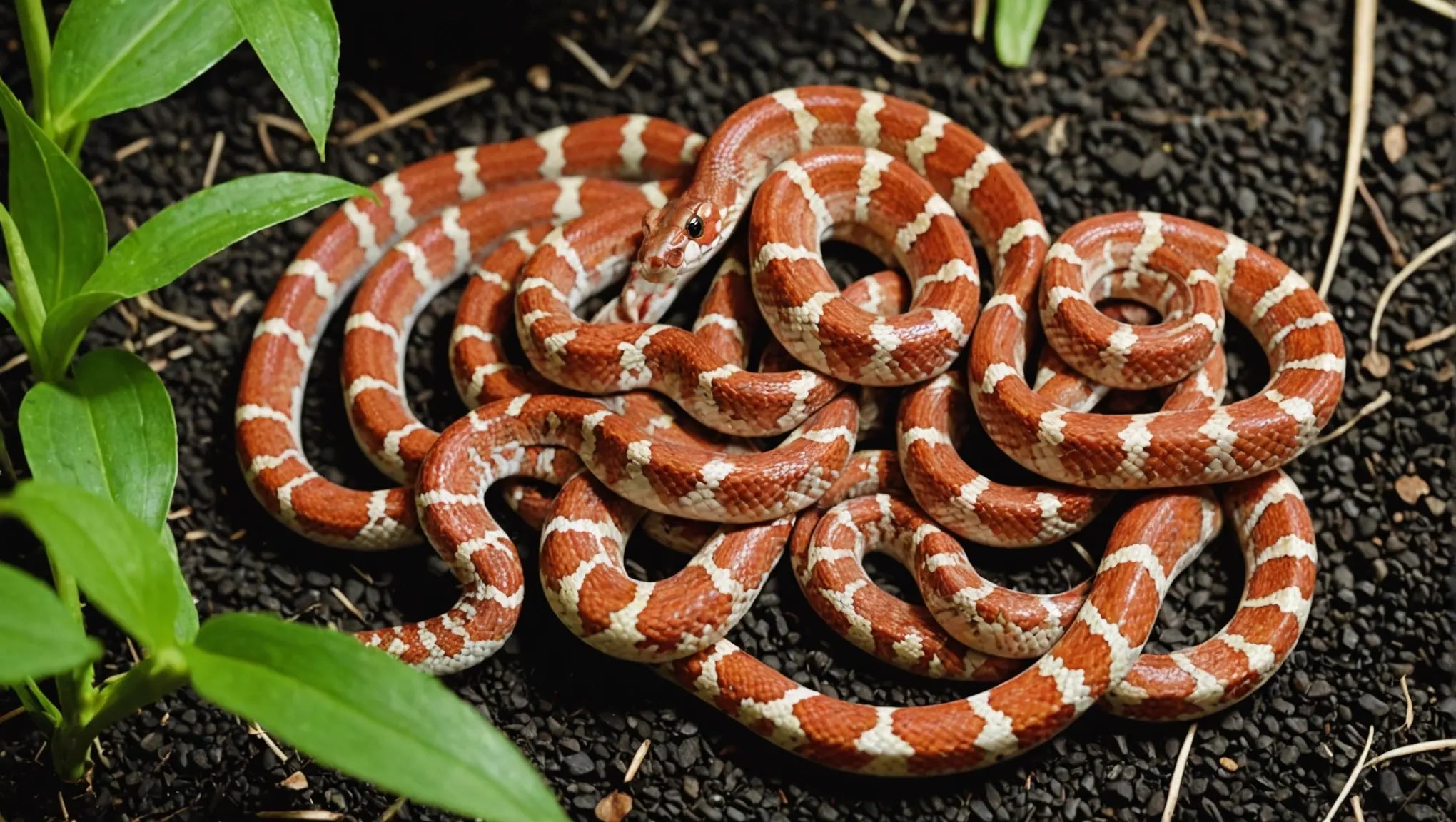
Setting Up a Corn Snake Habitat
Essential Tank Requirements
When it comes to setting up a home for your corn snake, the first thing you need is a proper tank. A 20-gallon long glass tank is a good start for a young corn snake. As they grow, you might need to upgrade to a larger tank, around 40 gallons or more, to give them enough room to stretch out. Make sure the tank has a secure lid because corn snakes are notorious escape artists.
Inside the tank, you’ll need to create a comfortable environment. This means setting up a thermal gradient with temperatures ranging from 75°F at the cooler end to 85°F at the warmer end. Use a heat lamp or an under-tank heater to maintain these temperatures. It’s crucial to monitor the heat with thermometers placed at both ends of the tank.
Humidity is another key factor. Corn snakes thrive in humidity levels of 35% to 60%. You can keep track of this with a hygrometer and adjust as needed, especially during drier months.
Decor and Enrichment Ideas
Decorating your corn snake’s tank isn’t just about aesthetics—it’s about mimicking their natural habitat to reduce stress. Start with a substrate like aspen shavings or cypress mulch, which allows for burrowing and is easy to clean.
Add some hiding spots using hide boxes or logs. These should be placed on both the warm and cool sides of the tank. Snakes like to feel secure, and these hides provide a safe space for them to relax. Branches for climbing and a water bowl are also essential. The water bowl should be large enough for the snake to soak in, which helps with shedding.
Temperature and Humidity Control
Maintaining the right temperature and humidity is vital for your corn snake’s health. For heating, a combination of an overhead heat lamp and an under-tank heater works well. Make sure to use a thermostat with your under-tank heater to prevent overheating.
Humidity can be managed by misting the tank occasionally or using a water bowl to increase moisture levels. During shedding, you might need to add damp moss or a humid hide to help your snake shed its skin properly.
Creating a habitat that closely resembles the corn snake’s natural environment is key to keeping your pet happy and healthy. Pay attention to the details, and your snake will thrive.
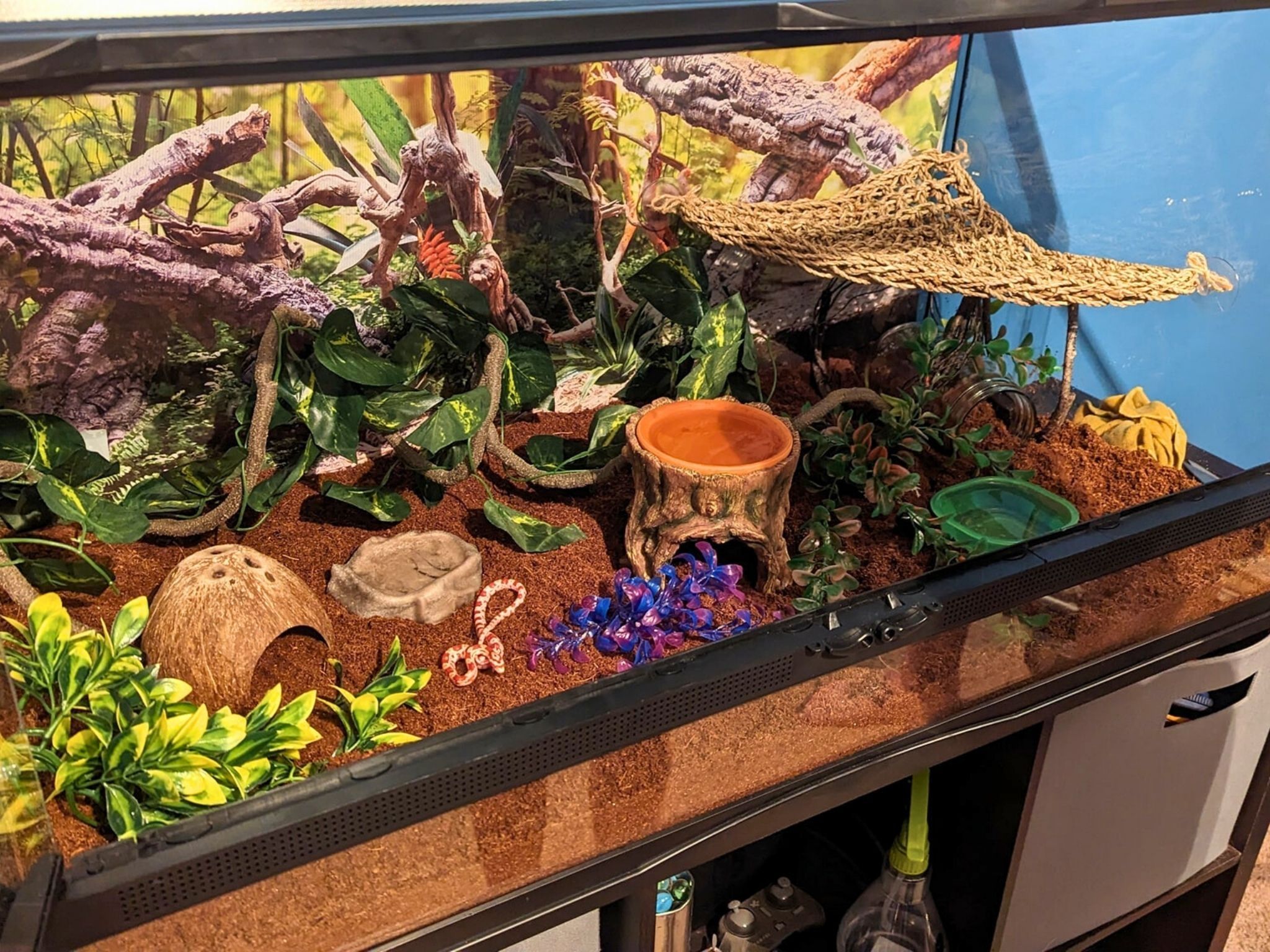
Feeding Your Corn Snake
Dietary Needs and Feeding Schedule
Corn snakes are carnivorous and thrive on a diet of rodents. Frozen and thawed mice are the go-to choice, as they are safer than live prey, which can injure your snake. Hatchlings typically start with pinkie mice, while adults can handle larger mice or even small rats.
Here’s a simple feeding guide:
- Hatchlings: Feed 1 pinkie mouse every 5 to 7 days.
- Juveniles: Offer food every 7 to 10 days.
- Adults: Feed every 10 to 14 days.
Always ensure fresh water is available.
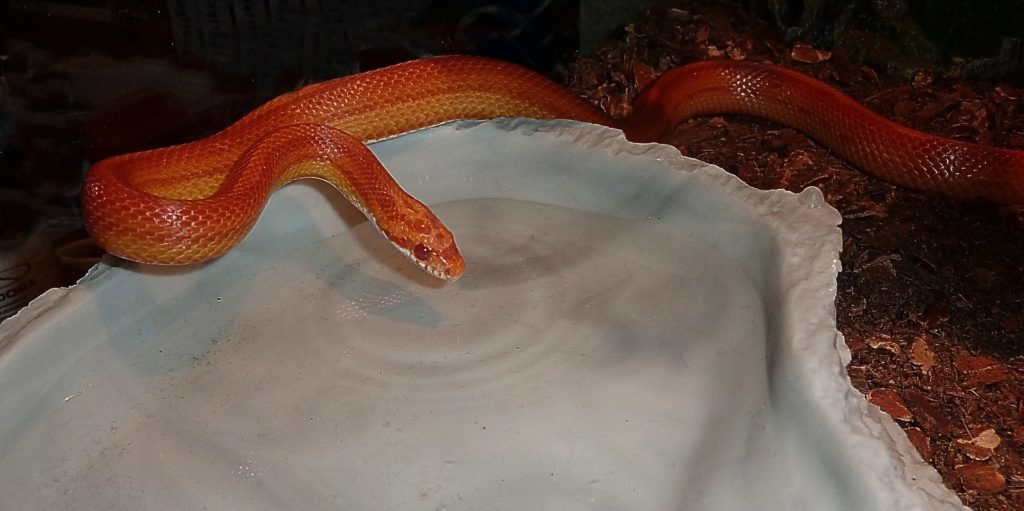
Handling Feeding Challenges
Sometimes, you might notice your corn snake refusing food. This can happen during shedding cycles or due to stress. If your snake’s appetite changes drastically, it might be time to check for health issues.
To encourage feeding, use feeding tongs to present the prey. Wiggle it a bit to mimic live movement, which can trigger the snake’s natural hunting instincts.
Safe Prey Options for Corn Snakes
It’s crucial to choose the right size prey for your corn snake. The prey should be about the same width as your snake’s mid-body. Feeding prey that’s too large can lead to regurgitation or stress.
- Pinkie mice: Ideal for hatchlings.
- Fuzzy mice: Suitable for growing juveniles.
- Adult mice or small rats: Best for full-grown corn snakes.
A well-fed corn snake is a healthy and happy pet. Proper nutrition ensures your snake remains active and content. Remember, proper nutrition is vital for your pet’s health and longevity.
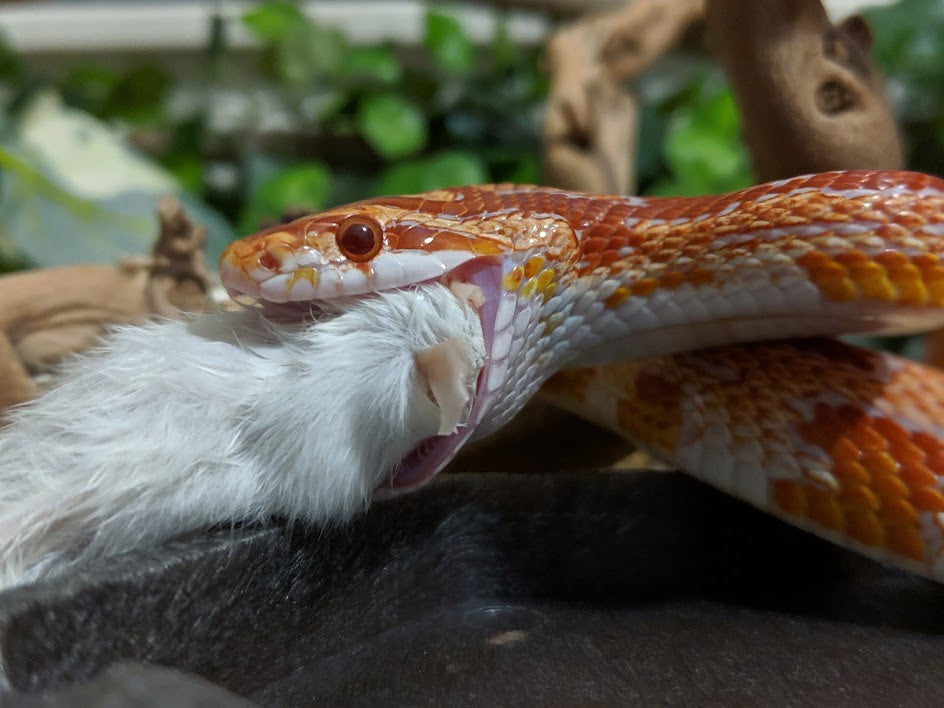
Handling and Taming Your Corn Snake
Best Practices for Safe Handling
Getting comfortable with your corn snake is a rewarding experience, but it’s important to approach handling with care. When you first bring your snake home, give it about a week to settle into its new environment before starting to handle it. This helps reduce stress from relocation and lets the snake acclimate.
When you’re ready to start handling, keep sessions short and sweet—about 10 minutes, two to three times a week. Move slowly and confidently to make your snake feel secure. Support its body with both hands, letting it slither freely without squeezing. Gentle handling is key to building trust.
Building Trust with Your Snake
Taming a corn snake takes time and patience. Regular, gentle handling helps most snakes become more tolerant of human interaction. Be consistent, but also pay attention to your snake’s behavior. If you notice signs of stress, like erratic movements or tight coiling, give your snake a break. Always progress at the snake’s pace, not yours.
“With patience and understanding, your corn snake will become a more confident and relaxed companion.”
Recognizing Stress Signals
Understanding your snake’s body language is crucial to safe handling. Look for signs of stress, such as sudden movements, tight coiling, or defensive biting. These are indications that your snake needs some space. Avoid handling during shedding periods, as snakes are more vulnerable and can mistake your hand for food due to impaired vision.
When handling your corn snake, remember that they are solitary creatures and prefer to be alone. Keep handling sessions stress-free and always wash your hands before and after to prevent the spread of bacteria, like Salmonella.
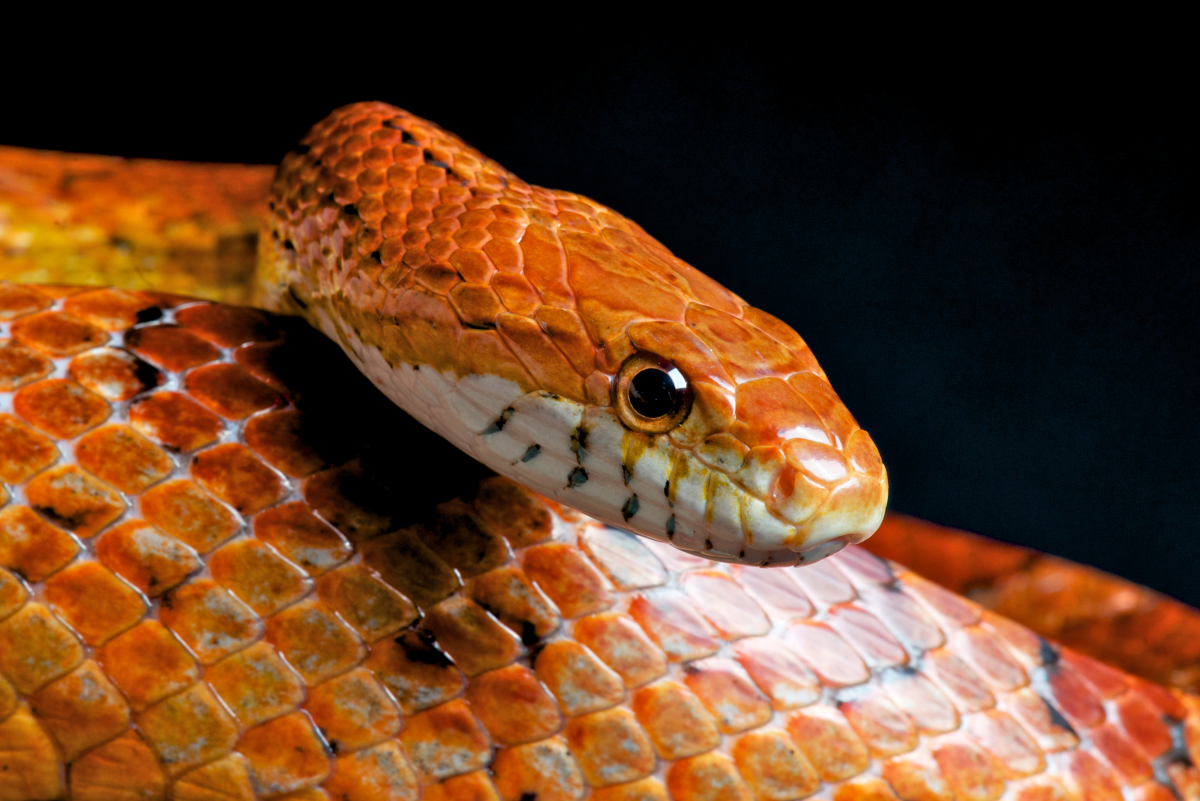
For more tips on handling different snake species, check out the best pet snakes for beginners.
Recognizing Health Issues in Corn Snakes
Common Health Problems
Corn snakes, while generally hardy, can face a few health issues. Respiratory infections are common, often signaled by wheezing or coughing. Mouth rot, also known as infectious stomatitis, is another issue, marked by oozing from the mouth or a bad smell. Blister disease presents as balloon-like swellings, while mites can cause skin blisters or lesions. Weight loss and lethargy are also indicators that something might be wrong. If your snake regurgitates its meals, it’s a sign to see a vet.
Preventative Care Tips
To keep your corn snake healthy, annual veterinary checkups are a must. Regularly check for signs of illness, such as cloudy eyes or blisters. Make sure your snake’s environment is clean and properly humidified to prevent shedding issues. A balanced diet and a stress-free habitat will also help in maintaining their well-being.
When to Consult a Veterinarian
There are certain signs that mean it’s time to call a vet. Lethargy, loss of appetite, or any sudden inability to move part of their body are red flags. Also, look out for cloudy eyes, blisters, or any unusual discharge. Immediate veterinary attention is crucial if you notice any of these symptoms.
“Keeping a close eye on your corn snake’s health can prevent minor issues from becoming major problems. Regular monitoring and timely veterinary visits are key to a long and healthy life for your pet.”
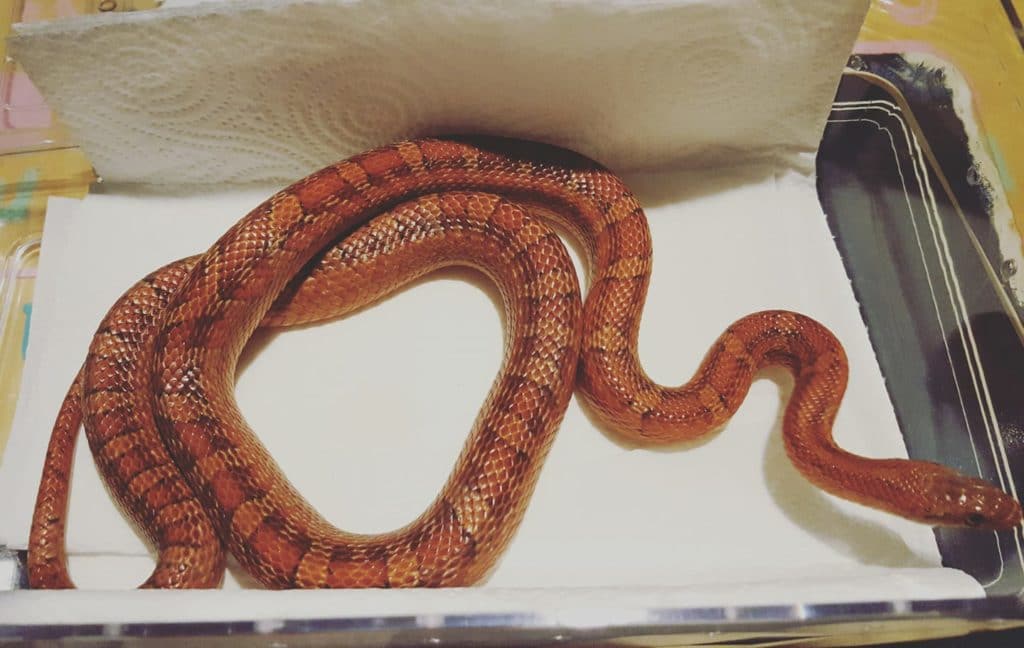
For more tips on maintaining a healthy pet snake, including creating an ideal habitat, check out our essential information guide.
Maintaining a Clean and Safe Environment
Regular Cleaning Routines
Keeping your corn snake’s habitat clean is super important. A dirty tank can lead to health problems, so here’s what you need to do:
- Daily Spot Cleaning: Every day, check for waste and remove it. This helps prevent bacteria from building up.
- Weekly Deep Clean: Once a week, take everything out of the tank. Use a reptile-safe cleaner or a 3% bleach solution to scrub the tank and all the accessories. Let the bleach solution sit for at least 10 minutes to ensure it’s disinfected.
- Monthly Substrate Change: Replace the substrate every month to keep the environment fresh and free from any harmful germs.
Keeping your snake’s home clean isn’t just about hygiene—it’s about creating a space where they can thrive happily.
Avoiding Harmful Substances
Corn snakes are sensitive creatures, so it’s crucial to avoid anything that could harm them. Here are some things to steer clear of:
- Loose Substrates: Avoid using sand or dirt as they can cause impaction if ingested.
- Cedar Bedding: Cedar releases fumes that are toxic to snakes.
- Sharp Decor: Ensure that all decor items are smooth and safe to prevent injuries.
Ensuring a Secure Enclosure
A secure enclosure is a must for your corn snake’s safety. Here’s how you can make sure it’s safe:
- Escape-Proof: Check that the lid is secure and there are no gaps where your snake could slip through.
- Sturdy Materials: Use materials that can withstand your snake’s movements without breaking.
- Proper Ventilation: Ensure there’s adequate airflow to maintain a healthy environment.
By following these guidelines, you’ll create a safe and comfortable home for your corn snake, helping them live a long and happy life.
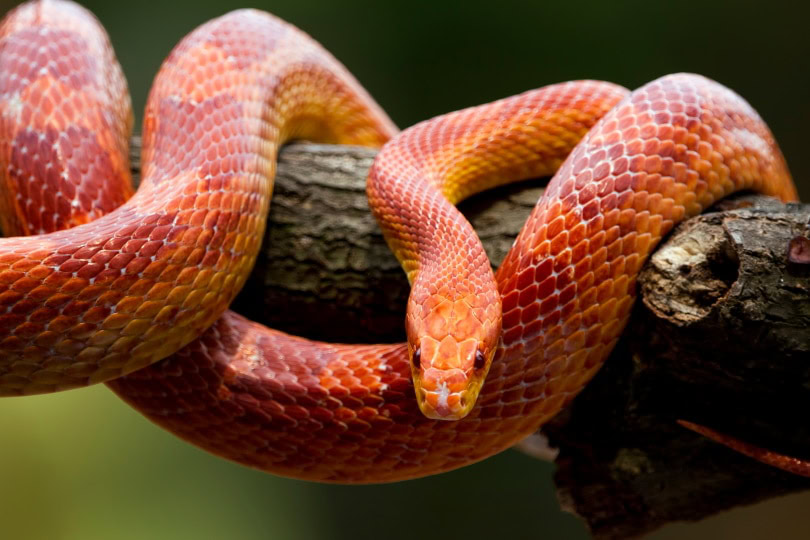
Corn Snakes in the Marketplace
Understanding Corn Snake Pricing
When it comes to buying a corn snake, prices can vary quite a bit based on factors like age, color morph, and breeder reputation. Common corn snakes might cost you around $50 to $100, while rare morphs, like the Scaleless or Palmetto, can run up to $500 or more. Here’s a quick look at some typical prices:
| Morph | Price Range |
|---|---|
| Miami Motley | $65 |
| Reverse Okeetee | $150 |
| Strawberry Snow | $350 |
| Scaleless | $250 |
| Locality Corn Snake | $349.99 |
Evaluating Breeders and Sellers
Finding a trustworthy breeder or seller is key. You want to make sure they’re knowledgeable and care about the health of their snakes. Consider these tips when evaluating:
- Reputation: Check reviews and ask for references.
- Health Guarantees: Ensure they offer some form of health guarantee.
- Cleanliness: Visit the breeder or seller if possible to see how the snakes are kept.
Legal Considerations for Ownership
Before you bring home a corn snake, it’s important to know the laws in your area. Some places have restrictions on owning certain reptiles. Make sure to:
- Check local wildlife laws.
- Understand any permits required.
- Be aware of any size or species restrictions.
Owning a corn snake can be a rewarding experience, but it’s important to do your homework before making a purchase. From choosing the right morph to ensuring you’re buying from a reputable source, each step is crucial to becoming a responsible snake owner.
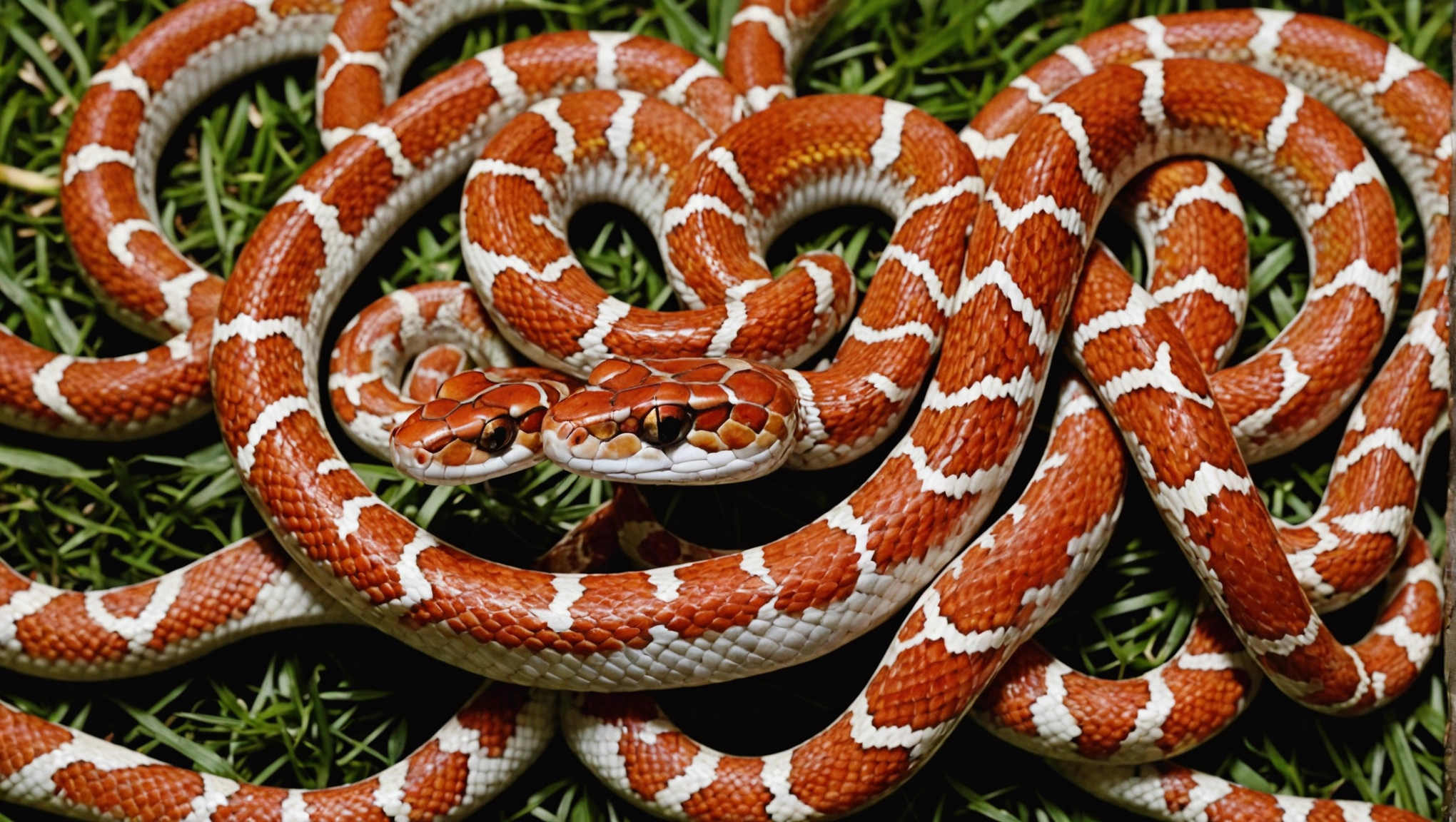
Conclusion
So, there you have it! Corn snakes are pretty much the perfect pet for beginners. They’re chill, easy to care for, and don’t need a ton of space. Plus, they come in all sorts of cool colors. If you’re thinking about getting a pet snake, a corn snake is a solid choice. Just remember to set up their home right and handle them gently. With a little love and attention, you’ll have a scaly friend for years to come. Happy snake keeping!
Frequently Asked Questions
Are corn snakes good for beginners?
Yes, corn snakes are great for beginners because they are calm, easy to care for, and usually friendly with people.
What should I avoid when keeping corn snakes?
Avoid using loose substrates like sand, which can be harmful. Also, steer clear of cedar wood, as it’s toxic to snakes, and keep their habitat below 90°F.
Can I handle my corn snake right after bringing it home?
It’s best to wait about a week before handling your new corn snake. This gives them time to adjust to their new home and reduces stress.
What do corn snakes need in their tank?
Corn snakes like to have two hide boxes, some branches to climb on, fake plants, and a bedding that lets them burrow. Make sure the tank has areas of different temperatures.
Are corn snakes friendly?
Corn snakes are known to be one of the friendliest snakes. They are gentle and usually enjoy being handled once they are comfortable.
Is a corn snake a good pet for a 10-year-old?
Yes, corn snakes are suitable for children, especially with adult supervision. They are easy to care for and teach responsibility.

